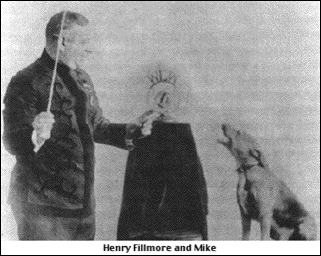Name Henry Fillmore | Role Composer | |
 | ||
Similar People Karl King, John Philip Sousa, Frederick Fennell, Clare Grundman, Edwin Franko Goldman | ||
Henry Fillmore
Henry Fillmore (December 3, 1881 – December 7, 1956) was an American musician, composer, publisher, and bandleader, best known for his many marches and screamers.
Contents

Cincinnati s march king henry fillmore
Biography
James Henry Fillmore Jr. was born in Cincinnati, Ohio, as the eldest of five children. In his youth he mastered piano, guitar, violin, flute, and slide trombone. He kept his trombone activities a secret at first, as his circumspect religious father James Henry Fillmore (1849–1936)—a composer of gospel songs, often in collaboration with Jessie Brown Pounds —believed it an uncouth and sinful instrument. Henry's mother secretly bought a used trombone for him and obscured, from Henry's father, the son's learning to play the instrument.
Henry Fillmore, whose relative Frederick Augustus Fillmore (1856–1925) was also a tune-composer for gospel songs, was a singer for his church choir as a boy. He began composing at 18, with his first published march "Hingham", named after a line of brass instruments.
Fillmore entered the Cincinnati Conservatory of Music in 1901. After graduating he traveled the United States as a circus bandmaster with his wife, an exotic dancer named Mabel May Jones. They were married in Saint Louis.
In the 1920s Fillmore was back in Cincinnati conducting the Shriners Temple Band, which he turned into one of the best marching bands in the country.
In 1938 Fillmore, after being advised by a physician that he had just a few months to live, retired to Miami, Florida. He went on, however, to prove the physician wrong. So Fillmore kept an active schedule rehearsing high school bands in Florida and composing marches. Henry Fillmore Band Hall, the rehearsal hall for many of the University of Miami's performing groups, acquired its name as a tribute to Fillmore's work in the band genre. His march Orange Bowl was written for Miami's Band of the Hour. Uncle Henry, as Fillmore was affectionately known to the members of the Band of the hour, also wrote the University of Miami's current official fight song – "Miami U How-De-Doo". His arrangement of the 'The Star-Spangled Banner' is the traditional arrangement performed by the Florida State University Marching Chiefs. His march Men of Florida was composed for the bands at the University of Florida. He was given an Honorary Doctorate of Music by the University of Miami in 1956 in recognition of his career. Fillmore lived out the rest of his days in South Florida. Perhaps no other individual has had his level of influence on the music of the private University of Miami and the public University of Florida and Florida State University.
Music
Fillmore wrote over 250 pieces and arranged orchestrations for hundreds more. He published under a variety of pseudonyms, including Gus Beans, Harold Bennett, Ray Hall, Harry Hartley, Al Hayes, and Henrietta Moore. Only the name Will Huff caused any issues, as another Will Huff composed marches and resided in Fillmore's state.
While best known for march music and screamers, he also wrote waltzes, foxtrots, hymns, novelty numbers, and overtures. Fillmore's best-known compositions include:
Fillmore gained fame as the "Father of the Trombone Smear", writing a series of 15 novelty tunes featuring trombone smears called "The Trombone Family". A number of these have a strong ragtime influence. The tunes have subtitles printed on the parts, some of which reflect social and racial realities of the time. All of Fillmore's trombone rags are as follows:
Occasionally, as in "The Footlifter" credit, Fillmore wrote with the name Harold Bennett.
Songs
Lassus Trombone
Americans We
Rolling Thunder
The Circus Bee
Trombone Family: a) Shoutin' Liza Trombone / One Step b) Teddy Trombone / A Brother to Miss Trombone
